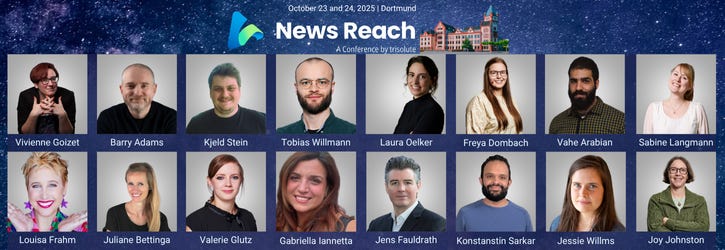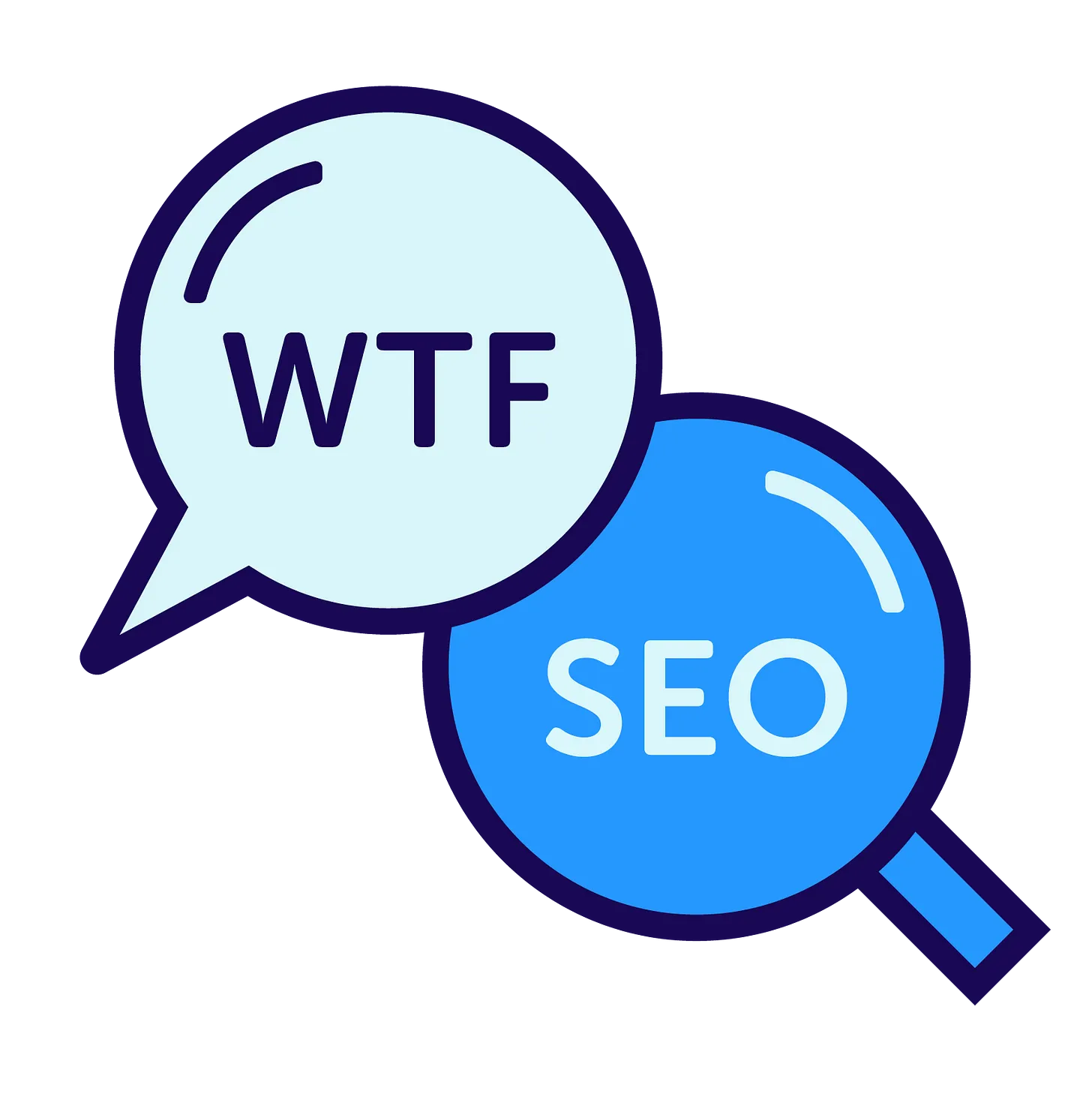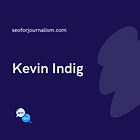Recapping the core update and other search news
Updates from Google land, AI developments and a quick recap of a great Kevin Indig post.
#SPONSORED
Speaker lineup just dropped for News Reach Con, the top news SEO conference of the year!
Hosted by Trisolute. Follow News Reach Con on LinkedIn as we begin rolling out session topics from this year’s outstanding speaker lineup!
🎟️ Secure your tickets before prices go up on August 1st.
Hello, and welcome back. Jessie and Shelby here, back from another hot, humid and humbling weekend. Jessie went for a long walk at Tommy Thompson Park and had two clutch softball wins. We may not mathematically be able to contend for the championship title, but that doesn't make the victory any less sweet! Shelby hosted a bridal shower for her best friend that included Jeopardy, a drag queen and the most delicious cake pops. The feedback is in, and it was a resounding success!
This week: Updates from Google land, AI developments and a quick recap of a great Kevin Indig post.
Join our community of news SEOs on Slack to chat any time.
Let’s get it.
In this issue:
Core update takeaways
What’s happening with AI?
Keywords are out — topics are in
THE 101
June 2025 core update takeaways
Google’s June 2025 core update officially finished rolling out after 17 days, starting on June 30 and finishing on July 17. Despite the announcement, industry watchers reported incredibly high volatility days later.
According to some reports, the news and media industry were relatively unaffected by the update. Outliers included The Independent and the Daily Mail, who experienced a decline in visibility, while some smaller to mid-sized digital news platforms saw drops between 20 and 50 per cent.
Some sites severely impacted by the September 2023 Helpful Content Update reported experiencing the first significant ranking recovery. Glenn Gabe reported recovery patterns across over 400 websites significantly affected by the original HCU.
Visibility in AI-driven features like AI Overviews and AI Mode mirrored impacts in core rankings. Glenn also reported that sites “sites negatively impacted by the June core update saw visibility in AIO drop as well.” This especially impacted Your Money or Your Life content categories, which observed substantial ranking changes, especially in topics like health, medical, finance and legal.
Google’s emphasis on AI was clear in this update. On June 25, Google announced MUVERA, a multi-vector via fixed dimensional encodings retrieval algorithm. The goal of the model is to make retrieving pages more efficient and accurate, helping Google pick the most relevant URLs for ranking and leaving the rest behind.
Additionally, Google also announced Graph Foundation Model (GFM) on July 10. GFM is an AI model that is designed to generalize datasets and graph structures. It more accurately creates predictions about the relationships between entities. Both of these models being announced during a core update likely indicate a greater focus by Google to improve the surfacing of relevant, quality content in the age of AI.
Finally, Search Advocate John Mueller also confirmed that Google’s core updates rely on long-term patterns of site behaviour rather than recent changes or link spam.
In response to a question about whether recent link spam would factor in a core update, John said, “Off-hand, I can’t think of how these links would play a role with the core updates. It’s possible there’s some interaction that I’m not aware of, but it seems really unlikely to me. Also, core updates generally build on longer-term data, so something really recent wouldn’t play a role.”
He suggests looking beyond recent link activity and focusing on those broader, long-term signals — quality content, site structure and trust.
AI Overview clicks, LLM.txt and a lawsuit from Google
Clicks drop dramatically with AI Overviews: A new study from GrowthSRC Media shows that the click-through rate for the top-ranking result on Google Search has fallen by 32 per cent — a decrease that correlates with the expansion of AI Overviews. That conclusion is based on an analysis of 200,000 keywords from 30 websites across e-commerce, SaaS, B2B and EdTech industries.
Here’s what else to know:
The observed decline is in contrast to Google CEO Sundar Pichai’s comments in The Verge, where he stated, “if you put content and links within AI Overviews, they get higher click-through rates.”
However, content ranked in positions 6 through 10 experienced an increase in CTR compared to the previous year, suggesting readers scroll past the AI summaries to find ranked results.
Declines in CTR for top positions reflect that search is changing rapidly. Diversify how people find your content, and consider key metrics — beyond ranking and traffic — to stand out.
🔗 Read more: Google CTRs drop 35 per cent for top result after AI Overview rollout
What to know about llms.txt: Google's John Mueller said it is "unlikely" that the content included in llms.txt would be considered duplicate content. However, he said he would still recommend using noindex to prevent the content in the file from appearing in search results.
llms.txt is a proposal to create a new content format standard for AI and large language models to crawl websites. It would provide publishers a way to provide a text-only (markdown) version of pages.
The worry is that someone could link to the llms.txt file, and then Google would surface that in addition to, or instead of, the HTML content.
Adding a nonindex for llms.txt “could make sense”, Mueller said, as it will prevent it from entering the index and potentially ranking, which would be “weird for users.”
🔗 Read more: Google says it could make sense to use noindex header with LLMS.txt
Google files a lawsuit: Google announced recently that it has filed a lawsuit against BadBox, the largest botnet of internet-connected TVs.
According to its press release, Google says the Badbox 2.0 botnet compromised more than 10 million uncertified devices running its Android open-source software. Google says cybercriminals infected these devices and committed large-scale advertisement fraud and “other digital crimes.” It’s a strong response from Google over an incident that put user privacy and security at risk.
The company said the lawsuit will enable the company to “further dismantle the criminal operation behind the botnet.”
🔗 Read more: We’re taking legal action against the BadBox 2.0 botnet
‘Keywords are out and topics are in’: Kevin Indig on a topic-first strategy
A recent Kevin Indig newsletter focused on the value of optimizing for topics instead of strings or keywords as the main priority for SEO and focusing on authority.
Traditional keyword-first SEO tactics worked when Google “primarily ranked pages based on string matching,” Kevin says. He explains that topics are the foundational structure of a publication’s visibility, while keywords and phrases are the “bricks and nails” that help build it. Optimizing for just keywords — and not overarching topics — won’t cut it.
Google doesn't view a search results page as a direct link between the user's query and a keyword on a page as sufficient anymore. Instead, topics must be the foundation of authority and long-term organic growth, and must be covered in-depth (and connected on-site).
Keyword-centric strategies risk creating thin content, cannibalization and missed audience opportunities. In contrast, a topic-first strategy allows for “deeper, more useful content ecosystems,” Kevin writes.
The query fan-out technique underpins how AI Mode — an experimental feature from Google that synthesizes wide swaths of information in a detailed response to a user query — works. It interprets intent and context to expand the keyword string much more broadly.
This renders a “piecemeal approach to targeting SEO keywords” a waste of time, Kevin says.
He advocates for a people-first approach that focuses on understanding your “target people, their problems and the topics they care about.” These are user personas, or templates for the kind of reader you want.
This requires covering core topics across these personas, creating zero-volume content based on audience needs, offering diverse perspectives and providing new, valuable information people can’t get anywhere else.
Kevin believes this aligns with the way Google thinks about content now: entity-focused, built around real people's problems, with more durable links and strong E.E.A.T signals — which sets a site up for long-term success.
🔗 Read more: Topic-first SEO: The smarter way to scale authority
#SPONSORED - The Classifieds
Get your company in front of more than 13,000 writers, editors and digital marketers working in news and publishing. Sponsor the WTF is SEO? newsletter!
RECOMMENDED READING
Google news and updates
🤖 Google: Introducing the Google Trends API (alpha): A new way to access Search Trends data.
🤖 Matt Southern: Google confirms CSS class names don’t influence SEO.
🤖 Sarah Perez: Google's new Web Guide search experiment organizes results with AI.
Even more recommended reading
5️⃣ Winston Burton: As search evolves, here are five ways to demonstrate the value of SEO.
👥 John Herrman: Why you are reading Reddit a lot more these days.
🔼 John Herrman: The AI boom is expanding Google’s dominance.
🗞️ Mark Williams-Cook: The SEO updates you need to know.
🧑💻 Jono Alderson: Why semantic HTML still matters.
💰 James Brockbank: How to calculate your brand’s total organic revenue potential.
1️⃣ Oshen Davidson: Why ranking on page one isn't enough for AI visibility.
What did you think of this week's newsletter?
(Click to leave feedback.)
Catch up: Last week’s newsletter
Have something you’d like us to discuss? Send us a note on Twitter (Jessie or Shelby) or to our email: seoforjournalism@gmail.com.
Written by Jessie Willms and Shelby Blackley









Has there been any studies/examples of the actual effects of implementing an llms.txt file yet? I have not yet seen anything...